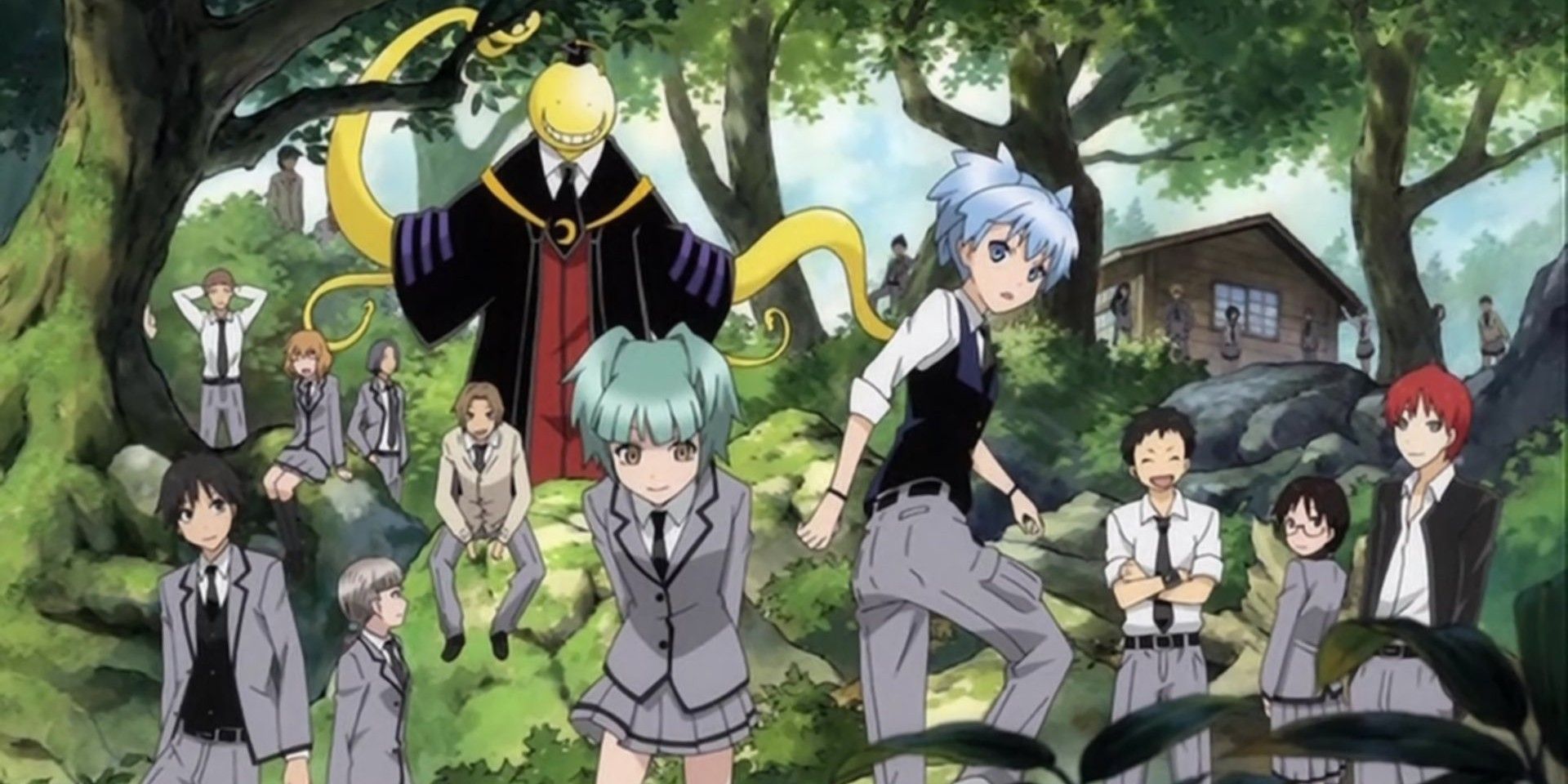DISCLAIMER: The following contains discussion of bullying and suicide.
With rainbow-haired class rosters and extremely overbearing student councils, anime is rarely the best reference for what school life in Japan is really like. Specifically, a series following a humanoid octopus teacher and his would-be assassins seems far from a realistic picture of the education system.
However, despite its outlandish premise, Assassination Classroom contains themes and plots that provide deep insight into some of the most pervasive issues plaguing many educational institutions in Japan. In doing so, he not only sympathizes with the plight of his target audience, but also prescribes lessons on how that situation can be improved.
Assassination ClassroomThe main cast is made up of the children of Class 3-E at Kunugigaoka Junior High – a class made up entirely of students ostracized for their poor academic performance. Rather than being placed in classes to help them improve, Class 3-E is removed from the rest of the school to serve as a cautionary example of perceived academic failure.
Because of this system, students in Kunugigaoka live under extreme pressure from both school and their families, forced to succeed for fear of being left out if they let themselves go. This kind of formal punitive structure is largely a creation of the series, but it highlights a predicament that many Japanese students face.
Advancement in the Japanese education system is usually based on passing entrance exams, much like the ones Class 3-E students agonize over throughout the series. These exams, sometimes critically rigorous, are the source of much anxiety, as they can dictate the trajectory of a student’s academic career and determine which high schools or colleges they may attend.
It should be noted that while there are exceptions to this approach, these exams are the typical means of admission for the majority of schools. Similarly, a considerable number of schools advise students to consider their future career plans from an early age, just as students in Assassination Classroom in episode 31.
According to an article by Nippon.com, students report that school pressures like these, along with other conformist policies on self-expression, are significant contributors to anxiety, depression, and absenteeism. While many institutions across Japan aim for a more personalized method that invests in students to meet their individual needs, a large number of institutions base their curriculum on this cookie-cutter, advancement-focused approach. This not only leaves struggling students in the dust, but fails to adequately challenge students who are ahead of their peers — a situation that led to delinquency for Class 3-E’s Karma Akabane.
Also, just like Nagisa Shiota from Class 3-E, a high percentage of Japanese students experience bullying in their school life. While some of this bullying takes the form of physical violence, an article by Savvy Tokyo reports that the overwhelming majority of cases consist of verbal antagonism such as threats, name-calling and hazing. As much of this bullying is difficult to prove, many cases go unreported and unsolved. Such problems have become so pervasive and destructive that Japan passed a law aimed at early detection and tracking to prevent bullying in 2013.
Unfortunately, the law has been largely influenced by a high degree of child suicide, another problem plaguing school-aged children. Statistically speaking, Japan previously had one of the highest annual suicide rates in the world. While the overall numbers of suicide cases have gradually declined over time, the number of child suicides has steadily increased each year. A previous study undertaken by the Japanese government found that there was a correlation between the start of the school term and the frequency of suicides, indicating that school-related problems may be an important factor.
Assassination Classroom tackles this subject through Rikuto Ikeda, the late student of Kunugigaoka’s headmaster, Gakuho Asano. While Ikeda was a bright, friendly, and cheerful child, he faced academic difficulties and bullying upon entering high school, which ultimately led to his suicide. Because Assassination Classroom is aimed at a middle- to high-school age demographic, these struggles are certainly the ones that resonate with its readers.
Yet, there are an abundance of practices in Japanese schools that help educate children during their schooling. Although conformity can have its dark side, many Japanese schools foster a beneficial sense of unity through activities that go beyond academia. Assassination Classroom has its own interpretations of core events like camping, school trips, sports days, and cultural festivals, each helping to build community bonds for students and friends, just as they did for Class 3 -E.
Also, while the above issues may be common issues hindering a healthy school life for some Japanese students, they are by no means universal or central to the Japanese university system. Many instructors and schools across the country work to support their students and guide them through the struggles and conflicts they face. Whether through an alternative approach to traditional learning or simply through dedicated attention, we strive to remedy these issues. Much like Koro-Sensei, the smiling mutant teacher of Class 3-E, these educators will fight for their students and do everything in their power to help them not only succeed, but believe in themselves.
About the Author



